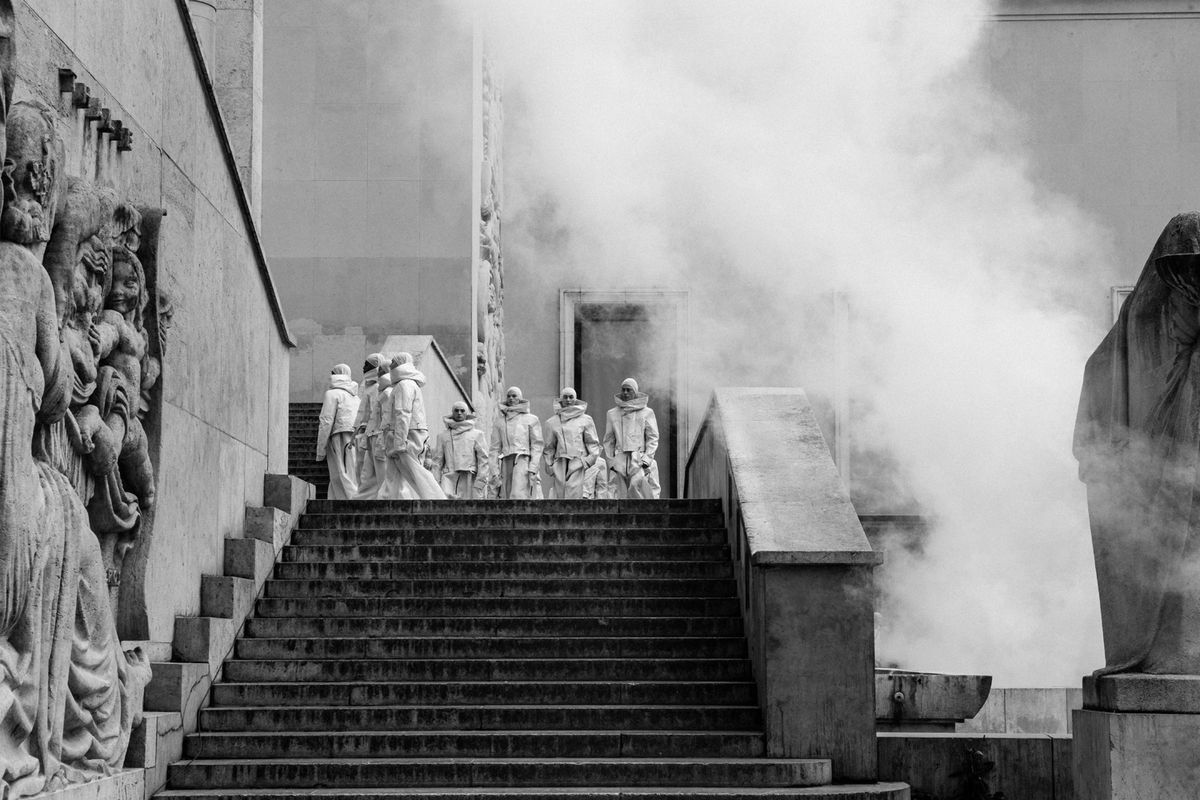World
This Copa América was scorching chaos. Will World Cup 2026 be different?

Conmebol should have seen it coming.
Throughout this summer’s Copa América, the signs of an impending logistical disaster were clear. In cities throughout the United States, transportation bottlenecks frustrated fans, security failures made them less safe, hot weather endangered everyone and games themselves were either sparsely attended or, as on Sunday, the dangerous opposite.
Indeed, the scary conditions at the final in Miami accomplished the incredible feat of wrapping all of the individual issues seen throughout the tournament into one highly representative example. It was everything that had been happening everywhere, all at once.
It’s tempting to say that the chaos made for a bad advertisement for soccer to a United States general public (or indeed to anyone who happened to be watching). Whether or not that’s true, it’s clear that the advertisement was accurate. This is just how soccer is now, and an organizer can either prepare for it or let fans suffer.
This is now the third time in four years that broadly defined “crowd issues” have overshadowed the finals of major tournaments, including the Euro 2020 final in London (Covid-19 delayed until 2021) and the 2022 Champions League final in Paris. If you expand the lens slightly to include all marquee footballing occasions, you could also count the problems in Rio de Janeiro for Argentina and Brazil’s World Cup qualifier in 2023 to make it four such instances in four years.
Each of these games took place in world capital-type cities, with well-developed infrastructure and a history of hosting gigantic events without major incident. The organizers for these games were the two most powerful and well-resourced regional confederations in world soccer. So while the issues at the 2024 Copa América raise questions about whether the United States is really prepared to co-host the World Cup with Mexico and Canada in less than two years, there’s a larger query beyond that: is any soccer organization prepared to host major soccer events as they exist today?
The days of assuming much-vaunted infrastructure, in the US or anywhere else, is going to get the job done are over. No one organization can hope to control the passion, dedication, and reckless abandon that soccer can elicit – but they can plan for it, and use those plans to mitigate harm.
This summer, Conmebol, the South American confederation that handled most aspects of the tournament’s organization, failed to do that. There is every indication that the confederation cut corners where it could and simply assumed that if they built it, dedicated fans would come, with little thought given to the idea that their dedication might manifest itself in dangerous ways.
The confederation has plenty of lessons to learn, and they may be needed as the United States could theoretically hold another edition of the Copa América in 2028 – the host for that edition has yet to be decided.
One would also hope that Fifa, which organizes the World Cup, was also watching and taking plenty of notes on what not to do in 2026.
Taking direction and best practices from locals is a big part of that equation. It’s not as if Hard Rock Stadium in Miami is unsuitable for big-ticket events. The venue has hosted Super Bowls, F1 races, past international friendlies, and is the every-week venue for the NFL’s Miami Dolphins. The standard procedures used for those events were clearly ignored, with local journalist Mike Ryan Ruiz saying that the security presence outside the ground was less than that for American football games involving Bethune Cookman, a college with an undergraduate enrollment of under 2,500. There was no security perimeter around the stadium, which might have kept the ticketless fans so consistently blamed for the issues from forming outside the gates in the first place.
Fifa must also take into account the hot temperatures that affected several aspects of the Copa América across multiple cities. Perhaps nowhere was that more pronounced than in Kansas City, where an assistant referee collapsed on the pitch due to heat exhaustion in Canada’s game against Peru. The on-field temperature that day was measured at around 91F, with humidity making it feel like an even 100F (38C). The schedule did little to help – that game kicked off at 5pm, when the sun was still beating down upon the stadium and long before temperatures had even begun to cool. Qatar dealt with a similar problem by employing a phalanx of migrant workers to build air-conditioned stadiums in deplorable working conditions. The US stadiums are already built, worker protections are more advanced (if flawed), and the political will to lend millions for building and/or upgrading stadiums owned by billionaires seems to be slowly evaporating.
Kansas City also displayed far more basic infrastructure issues that could be repeated in a number of other cities. A near-complete lack of public transportation links to Arrowhead Stadium meant that the highways surrounding the Truman Sports Complex where it resides were gridlocked before kickoff of the United States’ game against Uruguay. This is a scene familiar to any resident of Kansas City who has ever attended a Chiefs game in the NFL, but it is perhaps less so to visitors from around the world.
Even public transportation-rich locations have issues. In New Jersey, fans negotiated stuck trains and a lack of reliable bus service en route to MetLife Stadium for its two games, both of which featured late-arriving crowds as a result. This is the venue, remember, that is due to host the World Cup final in just over two years’ time. New Jersey Transit, which would be primarily responsible for taking fans to the stadium, is facing a $1bn budget shortfall this fiscal year. A transitway from a nearby station is now set to be completed next year, but is designed to move 12,000 fans per hour. MetLife Stadium holds 82,000.
The timeline is tight enough that any completely new changes to infrastructure are all but impossible – Kansas City ain’t extending the streetcar to Arrowhead in a year and half, and any additional transit projects to MetLife are unlikely to be completed too. The Kansas City World Cup committee has declared that buses will be used to take supporters to and from games, but from where remains an open question, with Kansas City being one of the most sprawled-out metro areas in the country.
Issues with security, too, often became public spectacles. The most notable, at least until Sunday, came in Charlotte, where a clash between fans of Uruguay and Colombia after the teams’ semi-final match resulted in families of Uruguay players being caught up in the melee. This included some players’ children – a scene so understandably terrifying that it caused several players to run into the stands. This, too, had its viral image: Darwin Nuñez comforting his child on the field, with a look of exasperation that clearly had little to do with the semi-final that had just been lost. What happens in under two years, when any number of international rivalries could become inflamed in a high-stakes encounter with a global television audience?
In these and other scenarios, the best thing Fifa can do after seeing Sunday’s final is to get final plans in front of prying eyes as soon as humanly possible. The size of Messi’s ankle may have gone viral, but the scenes beforehand did too. People will remember the latter longer than they will the former.
Show us how fans should get from wherever they’re staying in Kansas City to one of Arrowhead Stadium’s six games without using public transportation. Explain how a World Cup final with an audience in the multi-billions will proceed in the middle of the industrial swamp in New Jersey. Reveal plans to deal with excessive heat in the blacktop parking lots that surround so many of these venues. Explain how security will be handled, and who will be staffing those positions. Do it clearly, and do it soon.
Americans naturally believe that the country is natural at hosting big events, and to a certain extent that is true. But the Copa América has introduced doubt, and Fifa now has zero excuse for not heeding the warning.








